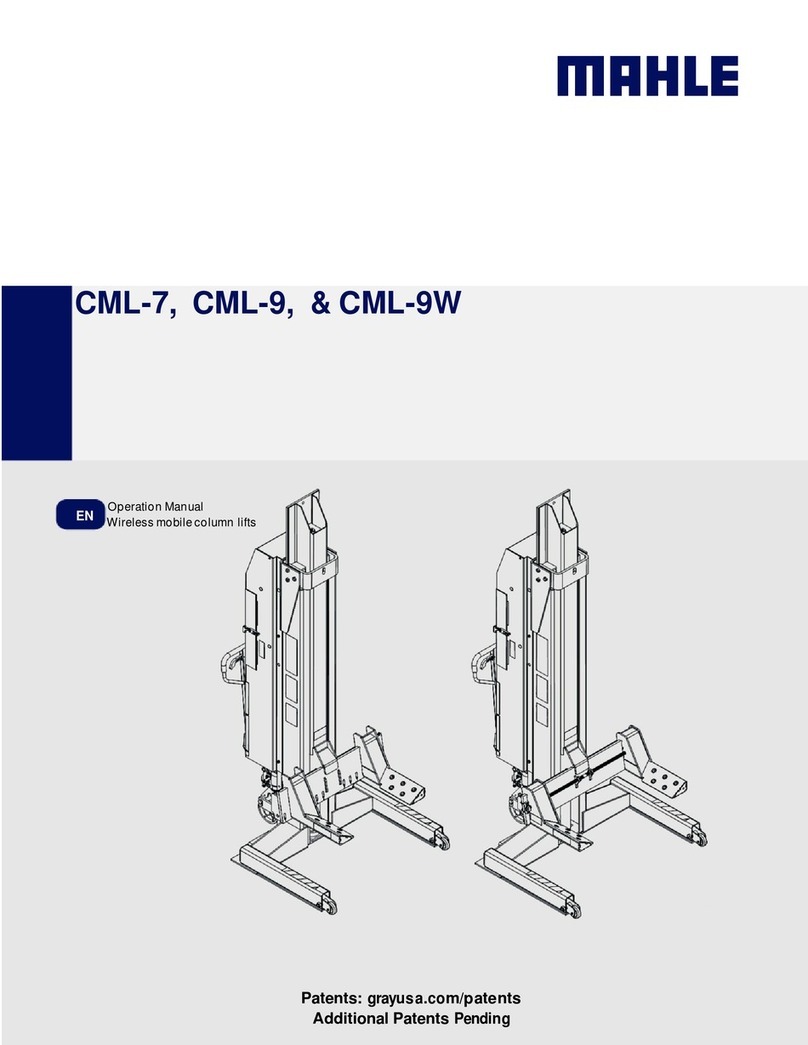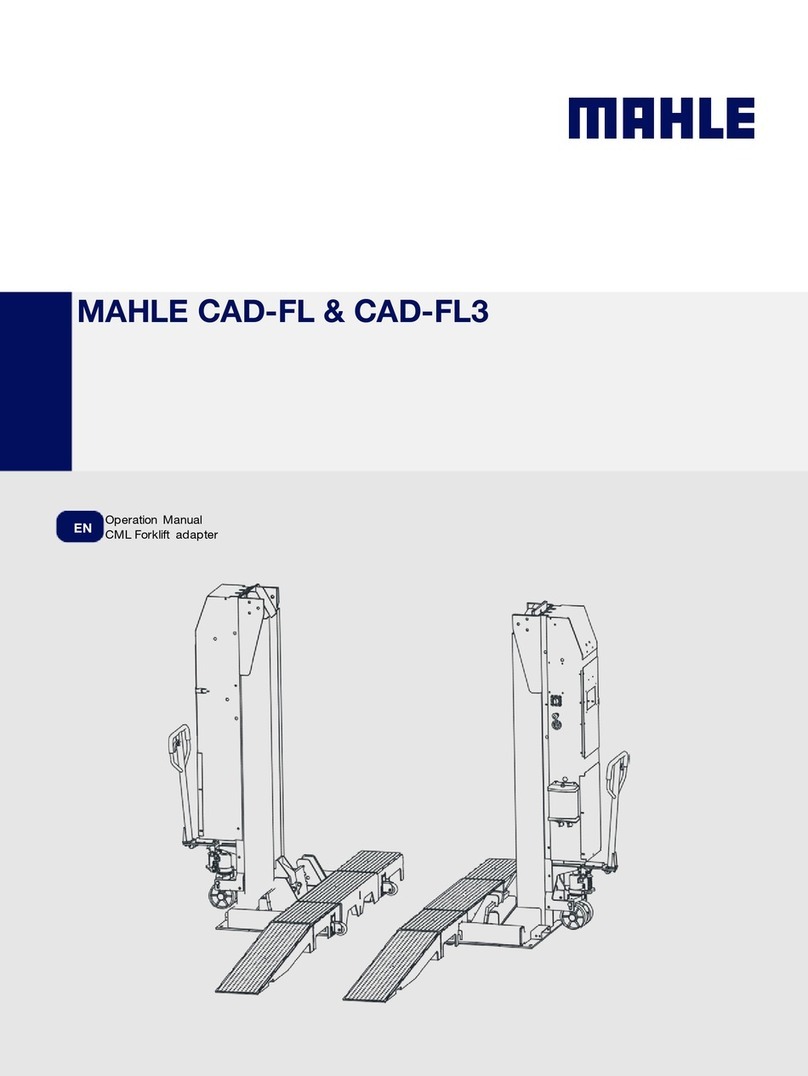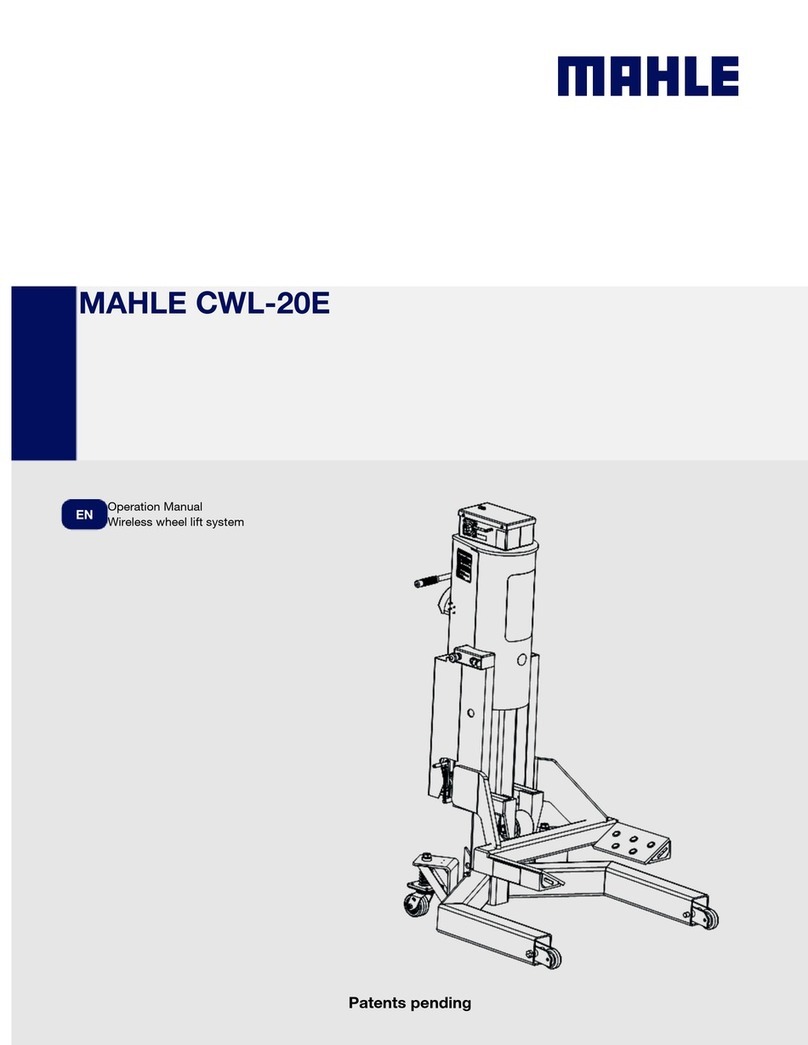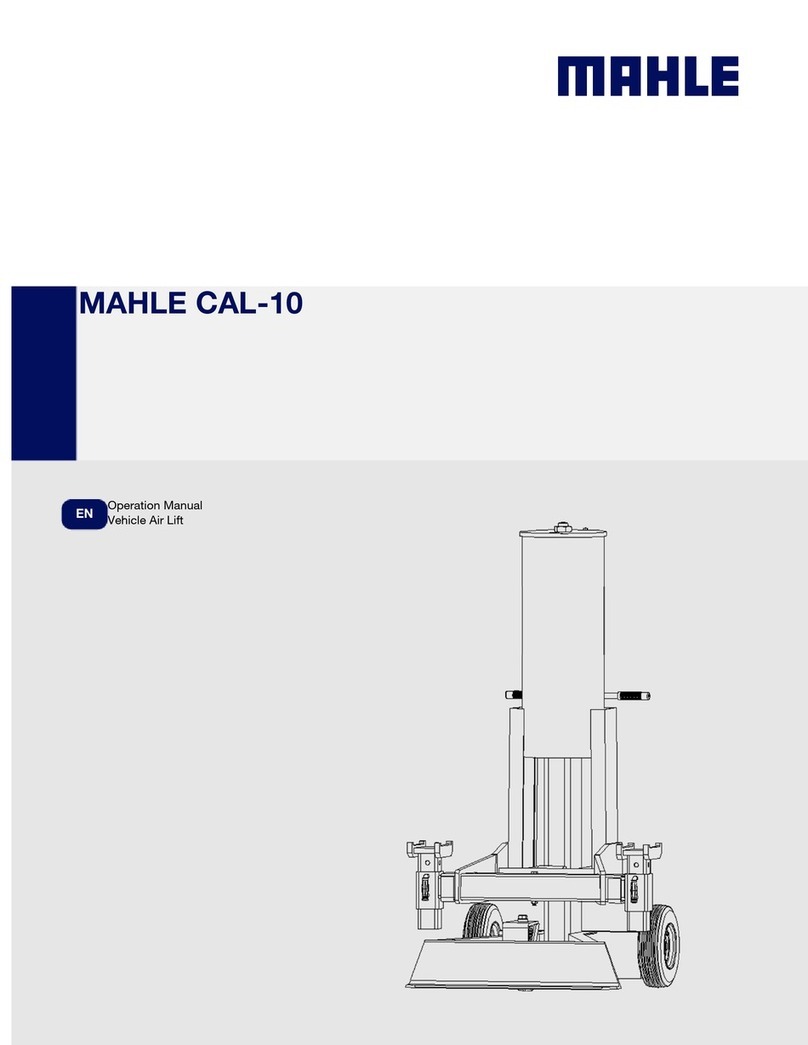
|
|
. Safety Regulations
. Warnings
Failure to follow all of these safety instructions can
lead to severe injury or death from a sudden loss of
the load. Contact the manufacturer at the numbers or
address printed on the back cover of this manual if
you have any questions.
Anyone who operate thi jack mu t read and
under tand all the in truction and warning
provided with thi jack before being allowed to u e
it. All operators must be careful, competent, trained,
and qualified in the safe operation of the jack. The
owner (or other responsible individual) must ensure
that any operator observes the proper safety
procedures for using this jack at all times. If the
operator does not read well or is not fluent in English,
the owner / manager must read and review the
instructions and warnings in the manual with the
operator in the operator's native language to be sure
that the operator will use the jack properly.
The owner / manager mu t keep thi manual for
future reference, and make sure the warning labels
on the jack are legible and intact at all times.
eplacement labels and manuals are available from
the manufacturer. Call the manufacturer using the
contact information on the back cover of this manual
if you have any questions.
Make ure the load doe not exceed the maximum
capacity of the lift. Maximum capacity is 20,000 lbs.
/ 9,070 kg. per lift. Never use the lift system to raise or
support more than maximum capacity per lift. Never
use a lift as a stand to support more than maximum
capacity per lift.
NEVER modify the product in any way.
Modifications may cause the lift to perform
improperly, resulting in injury or death.
Alway u e lift on a hard level urface, capable of
u taining the load. Be sure surface is clean and free
of debris, cracks, and chips.
The lift y tem i de igned to lift over-the-road
vehicle with rim of at lea t 21 inche in diameter
(14 inches in diameter if the manufacturer supplied
optional adapters are used). NEVE use the lift
system on vehicles with rims
less
than 21 inches in
diameter (14 inches if adapters are used).
U e the lift only in pair , on the opposite ends of
the same axle.
NEVER u e the lift y tem to rai e a vehicle by the
frame or tructural member. The lift is designed to
be used only beneath the vehicle tires.
To prevent tipping, never rai e or lower ju t one
ide of a vehicle.
NEVER lift an entire vehicle with the lift y tem.
Fig. 1: Warnings
Do not allow any part of your body under the
vehicle until both the lift are pinned a tand .
NEVER u e the lift y tem in conjunction with any
other equipment u ed to rai e a vehicle.
Never u e block , adapter , or acce orie that
have not been provided by the manufacturer, or
cribbing devices of any kind with this lift system.
NEVER u e the lift y tem a a wheel dolly for the
removal of tires.
NEVER allow the lift y tem to be u ed unle all
warning label and instructional decals are in place
and legible.
NEVER u e thi jack to lower a vehicle if the
vehicle wa rai ed u ing another lifting device or
device . The vehicle should be lowered with the
same equipment that was used to properly raise it
(read and follow the warnings and instructions for this
other equipment).
Alway u e caution while operating thi device and
remain mindful of how the device and load will react
during operation of this device.
Failure to under tand and obey thi warning may
re ult in per onal injury or death.
































